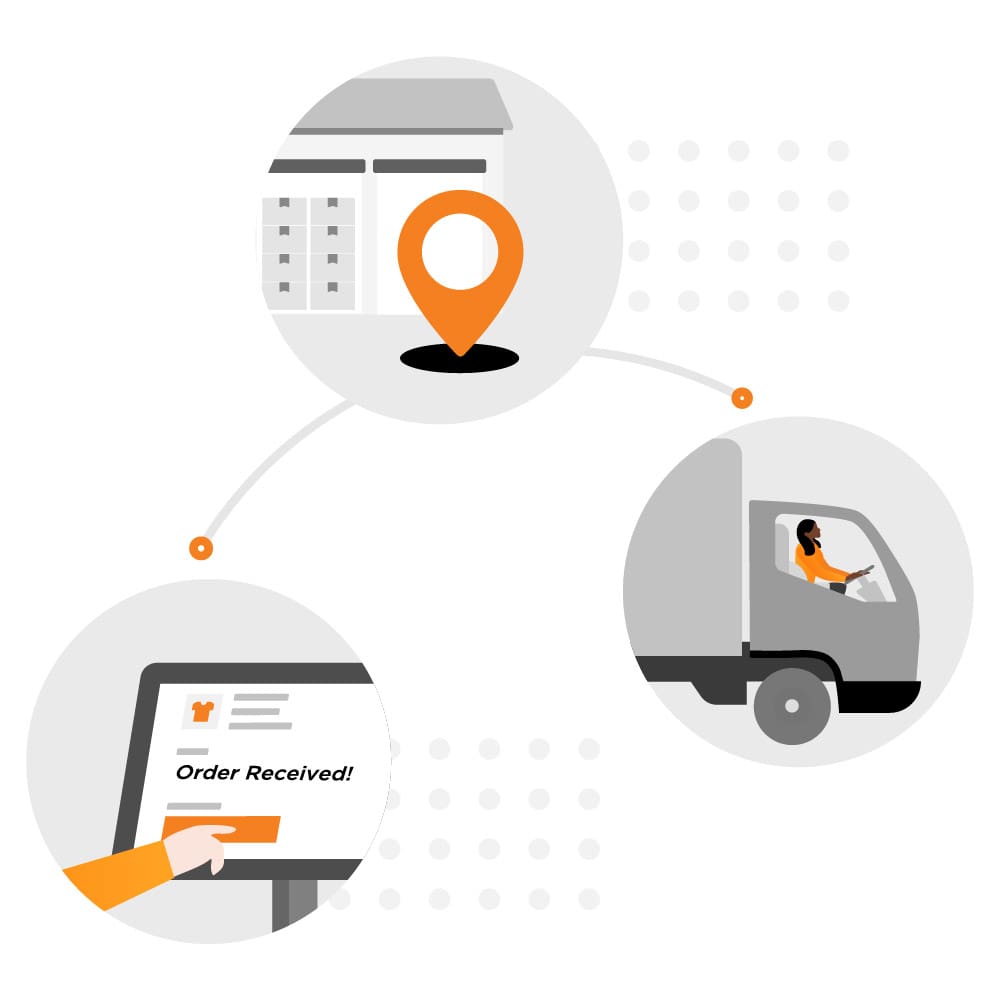Picture this: someone just clicked “buy” on that perfect holiday gift, and within seconds, a complex dance begins behind the scenes. Should it ship from the warehouse across town, or the distribution center three states away? This is where two powerful yet often confused technologies come into play: order management systems (OMS) and distributed order management (DOM). Each solution is referred to as its own separate inventory management system. You cannot have DOM without an OMS system.
Let’s demystify these two supply chain powerhouses that make modern shopping possible.
The simplest breakdown of the difference between OMS and DOM is this:
- OMS systems manage and track the entire order process.
- DOM is an advanced portion of the OMS system that allocates order fulfillment to the most optimal location.
In today’s hyperconnected retail landscape, where customers expect instant gratification and seamless omnichannel experiences, understanding this distinction has never been more critical.
The order management process starts with receiving an order. The second step with the location icon is when the order is fulfilled by the warehouse (this is where DOM comes in). The third step is order delivery. DOM functionality optimizes the second step in the OMS process, leveraging AI, real-time transparency, and adaptability to make split-second decisions about inventory allocation.
Let’s say we have two locations and three different types of shirts (black, orange, and grey). If I needed the orange shirt for an order, I would want to fulfill it from the smaller location icon since only the grey is available in the larger icon’s inventory.
Are there OMS systems without DOM?
Most legacy or on-premise systems do not have DOM capabilities or very limited functionality for order distribution. An OMS system without DOM would process the orders through manual selections created by the user. In today’s fast-paced ecommerce and retail environment, this manual approach is becoming increasingly unsustainable. Order management software as a whole manages the entire order process from sales processing, order entry, pricing, and credit card validation, as well as inventory management to invoice allocation.
Companies have fulfilled orders more than 200% faster with order management software and DOM, architected brilliantly within a single platform.

How does distributed order management help?
DOM allocates orders automatically and optimally, reducing human error and decision-making for every order. Preset routing and automated picking and packing also reduce or eliminate safety hazards in the warehouse, keeping your workers safe and your workplace compliant with safety standards and regulations, as well as avoiding disruptions to workflows.
What sets DOM apart is its ability to adapt to your unique business rules and real-world constraints. Modern DOM systems leverage advanced algorithms to balance competing priorities – like fulfillment speed, shipping costs, and inventory levels – in real-time. You can set granular rules for each warehouse location based on its capabilities, workforce, and local market demands.
For instance, you might prioritize same-day shipping from urban fulfillment centers while optimizing for bulk efficiency at regional warehouses. DOM’s intelligent routing ensures that multi-item orders are distributed across your network for maximum efficiency, even during peak seasons or supply chain disruptions.
See what to do in January. Get a jump on a smoother peak season with these winning peak strategies to eliminate chaos.

Legacy OMS systems can’t keep pace with today’s real-time commerce demands. Features that were once premium – like same-day shipping, BOPIS (Buy Online, Pickup In Store), and multi-channel fulfillment – are now table stakes for staying competitive.
Modern DOM and OMS systems also enable seamless WMS software integrations with other solutions, including advanced analytics and AI-powered shipping management tools, allowing you to future-proof your operations while maintaining access to mission-critical tools and data.
Why do some companies just reference DOM without OMS?
Many companies refer to their OMS systems purely by DOM. This occurs when confusion exists between the two. As stated earlier, DOM is the optimized fulfillment portion of the OMS system which manages and tracks the entire order process. So yes, OMS systems can exist without DOM functionality.
Many companies refer to OMS systems purely by DOM to highlight that they have the advanced portion of the order management system.
What about Deposco’s OMS system?
Bright Order is Deposco’s cloud-based order management platform that automates DOM capabilities, offers third-party logistics billing and much more.
The OMS system integrates sourcing and fulfillment from warehouses, 3PL providers, external supply chain partners, and retail stores based on real-time inventory, demand, and location.
In this award-winning project, Psycho Bunny uses Deposco Bright Store to leverage physical stores as proxy warehouses to fulfill more online orders. This move brought 60% of stores into their available-to-sell network, increasing available inventory by 20%.

Bright Store and Bright Order work seamlessly with Bright Warehouse WMS software, in addition to integrating with financial (ERP) systems, homegrown systems, and other supply chain management software. Contact us to see how Bright Order can help you when It’s Grow Time!

